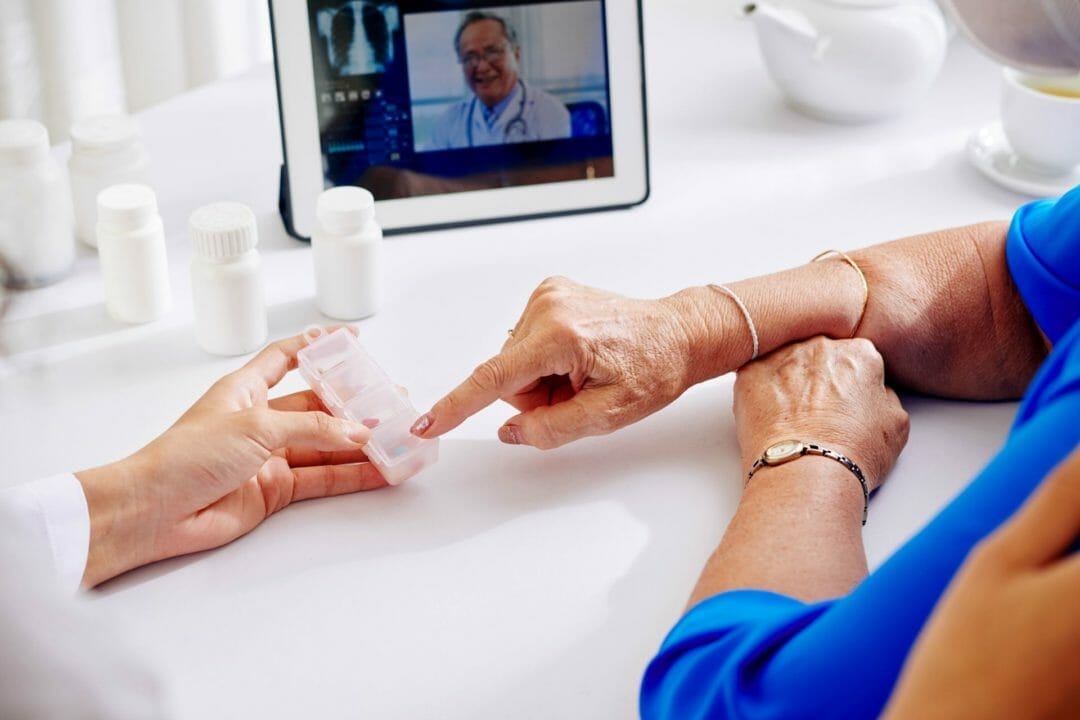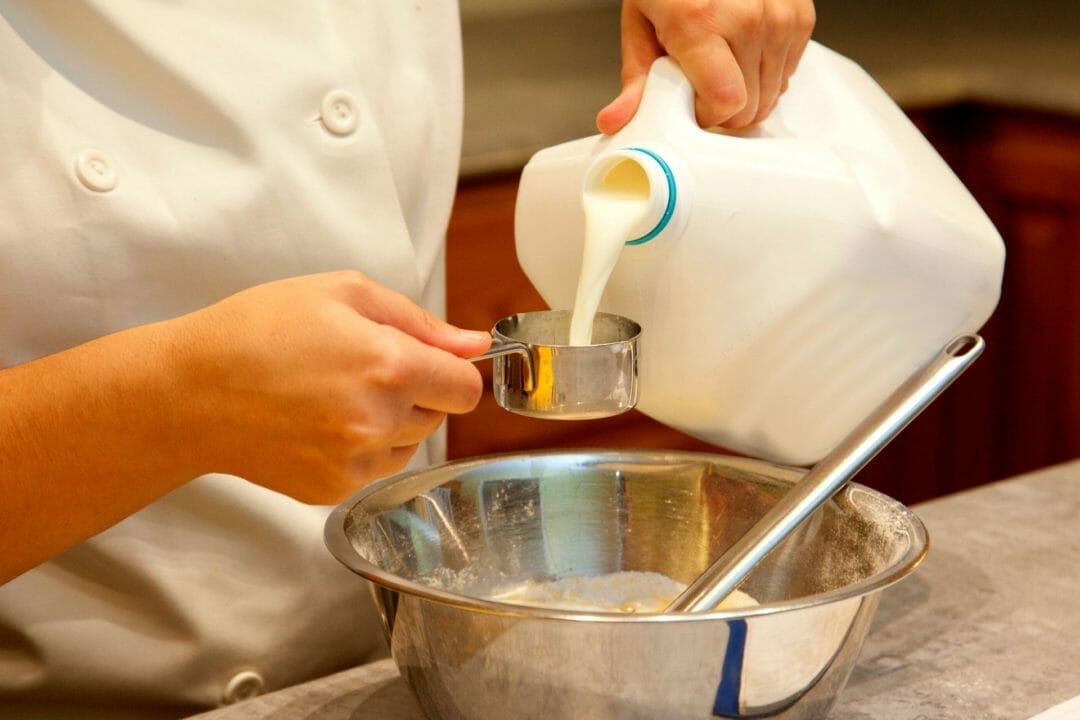Phosphorus is a mineral that can be found in nearly every food - whether it be natural or processed. In the right amounts, it is vital to keep your body healthy.
Together with calcium, phosphorus helps maintain the strength of your bones and teeth. It also has a role in keeping your cells and tissues in good condition, and in repairing them when damage occurs.

Why do I need to control my phosphorus intake?
Having too much phosphorus in your body is usually not a problem. Healthy kidneys can simply filter out the excess from your blood. Unfortunately, when you have chronic kidney disease (CKD), it's no longer that simple.
Damaged kidneys cannot effectively remove surplus phosphorus. Instead, it will accumulate in your blood. Left unchecked, high phosphorus levels will eventually damage your health and well-being.
Possible symptoms of too much phosphorus in your blood, or hyperphosphatemia, range from itchy eyes in mild cases, to nausea and diarrhea in more severe ones. We’ll talk about this in more detail in the next section.

What is the importance of phosphorus restriction?
When your blood phosphorus levels exceed the normal range, you may start to experience negative effects.
Excess phosphorus can cause your bones to become weak and brittle as they start to lose calcium. That lost calcium can be deposited in your lungs, eyes, blood vessels, and heart. These calcium deposits can cause them to harden, increasing the risk of a heart attack or a stroke.
Other symptoms of too much phosphorus include:
- Itchy skin
- Red and itchy eyes
- Joint pain
- Muscle pain and weakness
- Severe constipation or diarrhea
- Nausea and vomiting
What is a safe blood level of phosphorus?
CKD patients not yet on dialysis should "maintain serum phosphate in the normal range." This is according to the guidelines set by the International Society of Nephrology in 2017.
Most resources agree that you should maintain a range of 2.5 to 4.5 milligrams of phosphorus for every deciliter of blood (2.5 - 4.5 mg/dL).

You'll need to get a blood test in order to determine your phosphorus levels. Remember to check with your healthcare team to effectively interpret your results.
The challenge for those with CKD is to keep a healthy range of phosphorus in their blood, even when their kidneys can no longer effectively filter out excess nutrients.
One way to do this is to reduce phosphorus in your diet. Your doctor may also prescribe medication to limit amount of phosphorus your body absorbs.
Phosphate binders

To help keep your phosphorus levels within a normal range, your doctor may prescribe phosphate binders.
These are medications that help limit the amount of phosphorus your body takes in from the food you eat. They come in many forms - tablets, pills, powders, and liquids - and some may have additional components, like calcium.
Phosphate binders are prescription drugs. Please only take these medications when ordered by your doctor.
Phosphorus and dialysis
Dialysis helps remove excess phosphorus from your blood. However, it can still build up in your body during the time between dialysis sessions.
To avoid complications, maintaining a blood phosphorus level in the normal range is recommended. In some cases, a lower than normal phosphorus level is advised.

Please remember to check with your dialysis care team to determine your appropriate phosphorus levels.
What are common foods that contain phosphorus?
Now that you know how important it is to limit phosphorus, perhaps you're wondering what exactly you can do to accomplish this.
The main strategy, of course, is to begin a low phosphorus diet. And to be successful at that, it's helpful to have an idea of how much phosphorus can be found in your everyday food items.
We've prepared this list of high phosphorus foods and their low phosphorus counterparts to get you started:
High Phosphorus Foods To Avoid | Low Phosphorus Foods Alternatives |
|---|---|
Milk, soy milk, enriched milks, pudding, yogurt, and non-dairy creamers | Unenriched almond milk and rice milk |
Fat-free sour cream and fat-free cream cheese | Regular or low-fat sour cream and cream cheese |
Processed cheeses and cheese spreads | Small servings of cheddar, brie, mozzarella, and Swiss cheese |
Ice cream and frozen yogurt | Sorbet, sherbet, and frozen fruit |
Store-bought breads, biscuits, cornbread, muffins, pancakes, and waffles | Fresh dinner rolls, bread, bagels, and English muffins |
Chocolate and caramel, including candy bars and drinks | Small servings of jelly beans, hard candy, gumdrops, and fruit snacks |
Colas, bottled tea, some flavored waters, energy/sports drinks, wine, beer, mixed drinks | Plain water, lemonade, lemon-lime soda, ginger ale, root beer, fresh-brewed coffee and tea |
Processed meats like bacon, bologna, chicken nuggets, ham, hot dogs, etc. | Fresh lean beef, poultry, seafood, eggs, lamb, wild game, etc., without added ingredients |
The protein and phosphorus correlation
It's important to note that almost all foods contain phosphorus, so avoiding it may be hard to do. This is one of the biggest hurdles you need to overcome in keeping up a low phosphorus diet.
Proteins are among the foods with a well-known association with phosphorus. It also happens to be another of the nutrients you should be limiting.
According to studies, the average mixed diet contains about 12 to 14 milligrams of phosphorus per gram of protein consumed. That means the more protein you eat, the more phosphorus you take in.
But on the bright side, that also means a low protein diet and a low phosphorus one fit together pretty easily. As long as you limit your protein intake, you're limiting phosphorus as well.
Hidden phosphorus in your food.
Another challenge to a low phosphorus diet is that no matter how vigilantly you watch your intake, you may be failing to account for the "hidden phosphorus" in certain foods.

Phosphorus is commonly used as an additive and preservative. US regulations require listing these additives on food labels. But specifying the amount of phosphorus actually contained in an item is not required.
These "hidden phosphorus" additives can increase your blood phosphorus levels without you noticing.
Identifying and avoiding phosphate additives
Fortunately, there's a quick tip for recognizing phosphorus additives in food labels. Just look for any ingredients that contain "PHOS" in their name.
Here are some examples of phosphate additives:
- Calcium phosphate
- Dicalcium phosphate
- Disodium phosphate
- Monosodium phosphate
- Phosphoric acid
- Sodium acid pyrophosphate
- Sodium hexameta-phosphate
- Sodium tripolyphosphate
- Tetrasodium pyrophosphate
- Trisodium phosphate
Healthy tips to shop, plan, and prepare meals with less phosphorus
Starting a low phosphorus diet can feel intimidating: there's a lot to know, and a lot you need to take into account.
But like any major change, you can start with small steps and work steadily towards your goal. We know you can do it!
Here are some tips we've gathered to help you on your way:
At home
- Mind your servings sizes. A large serving can turn even a low-phosphorus food item into a high-phosphorus one
- Use milk substitutes and non-dairy milk/creamers instead of milk in cereal, coffee, sauces, etc

At restaurants
- Do some research beforehand. Many restaurants have websites with their menus online. Choose a restaurant with dishes that are suited to your diet.
- Call ahead. Explain that you're on a special diet, and see if your food can be made to order. Many restaurants are happy to accommodate requests.
- Avoid casseroles and mixed dishes. These are usually high in phosphorus and sodium (which you should also be watching)
- Avoid desserts with chocolate, cream cheese, ice cream, nuts, or any dairy products
- Choose desserts with simple preparations and not too many ingredients to avoid "hidden" phosphorus

Before you go...
And there we have it, we've reached the end of today's article. We know that was a lot of information to take in. Great job!
But this is only the beginning. The real challenge is only starting. You need to take all that you've learned here, and turn them into action. Real, tangible changes that affect your life.
You may have a long way to go, but if you stay committed and take it one step at a time, we know you can reach your goals.
And that holds true for your low phosphorus diet, and - even your entire journey to improving your kidney health.
So, we'll do our best to guide you through it -- every step of the way.
https://www.kidneyfund.org/kidney-disease/chronic-kidney-disease-ckd/complications/high-phosphorus/#what_is_high_phosphorus
If you need to limit phosphorus -
https://www.kidney.org/sites/default/files/02-10-0411_ABB_Phosphorus.pdf
KDIGO 2017 Clinical Practice Guideline Update for the Diagnosis, Evaluation, Prevention, and Treatment of Chronic Kidney Disease–Mineral and Bone Disorder (CKD-MBD) -
https://kdigo.org/wp-content/uploads/2017/02/2017-KDIGO-CKD-MBD-GL-Update.pdf
Low-phosphorus diet: Helpful for kidney disease? -
https://www.mayoclinic.org/diseases-conditions/chronic-kidney-disease/expert-answers/food-and-nutrition/faq-20058408
Phosphorus and Your Diet -
https://www.kidney.org/atoz/content/phosphorus
The “phosphorus pyramid”: a visual tool for dietary phosphate management in dialysis and CKD patients -
https://bmcnephrol.biomedcentral.com/articles/10.1186/1471-2369-16-9

